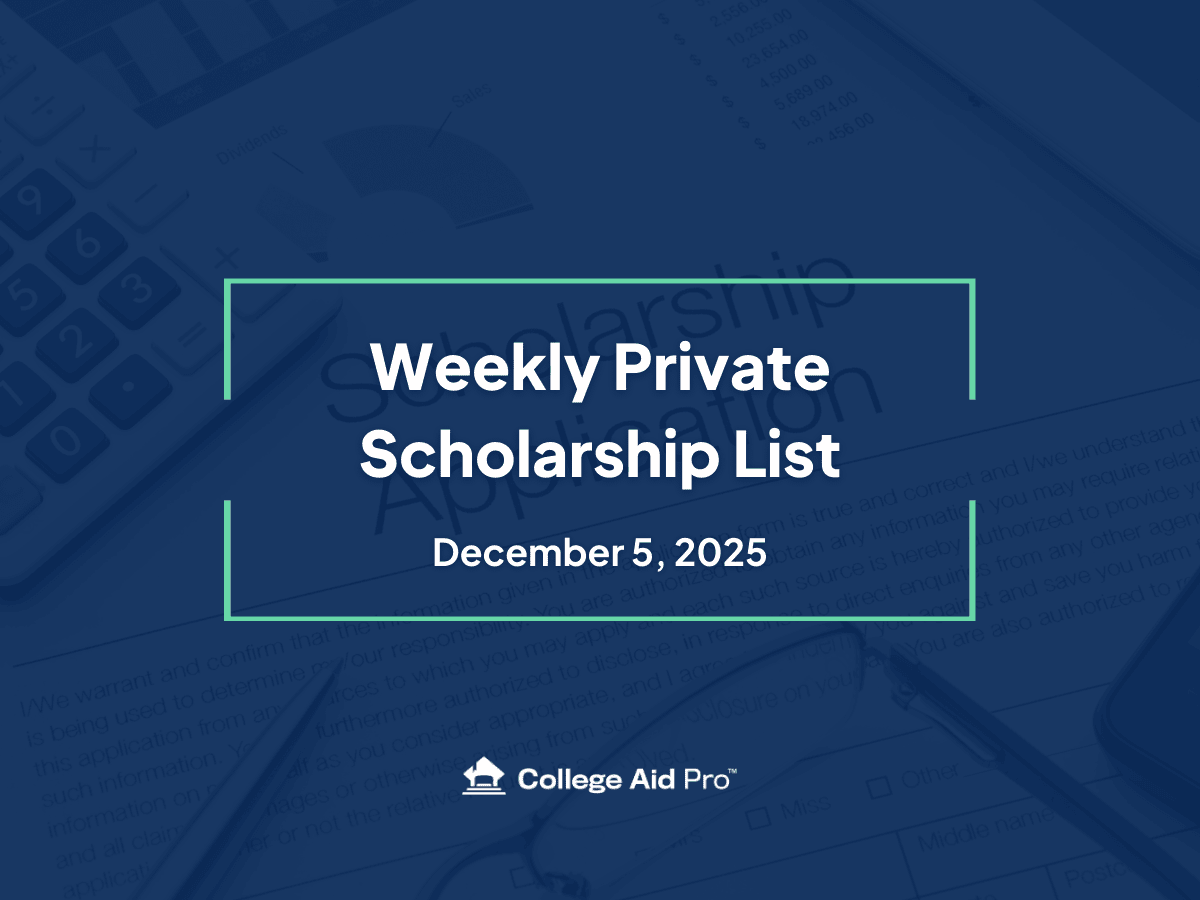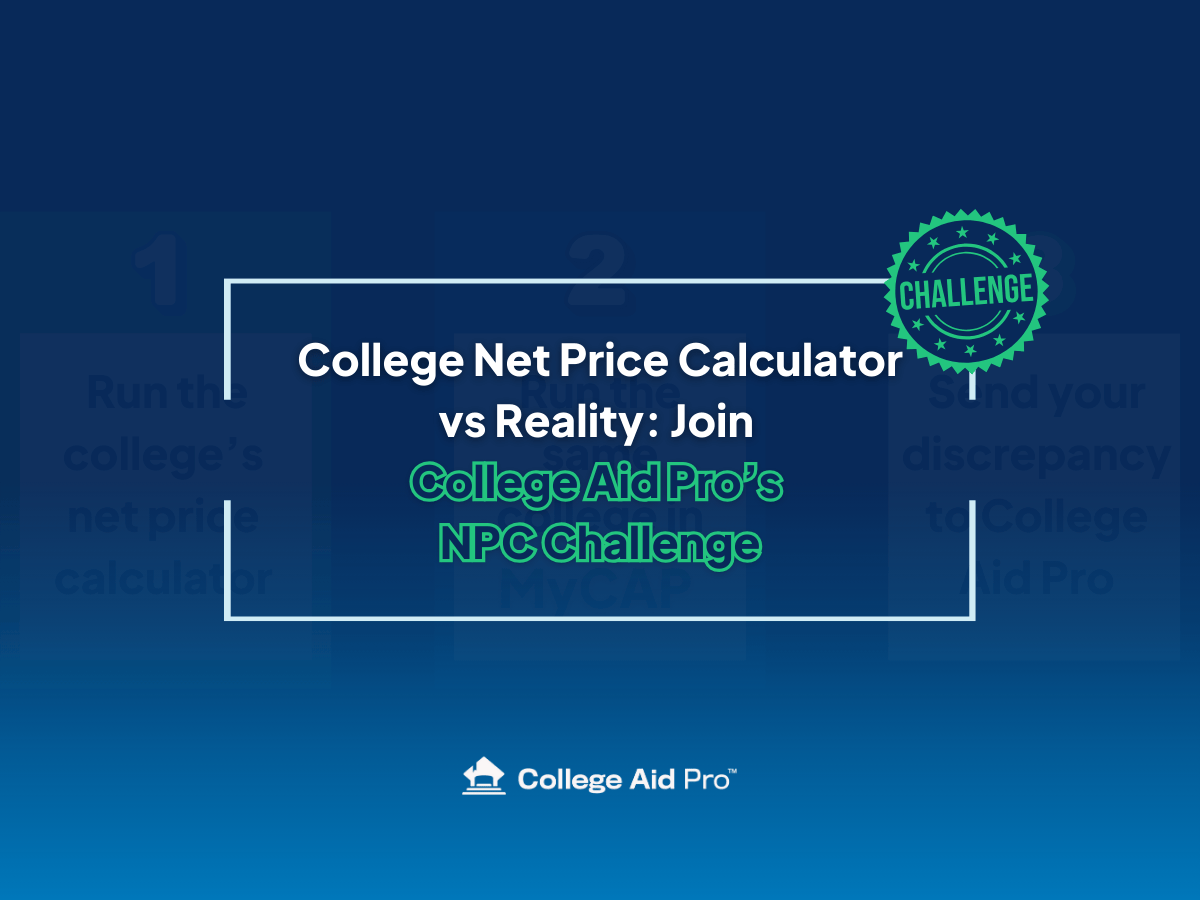College admissions can start to roll in in the month of December every year and with them come the varied and sometimes cryptic award letters. Hosts of students and their families pour through awards trying to make heads or tails of what it all means. There is no consistency in how schools convey their award offers making the task feel impossible at times. This can lead to students making poor decisions not being completely aware of what their chosen school is going to cost.
You don’t have to be among the hordes of confused students when it comes to understanding college financial aid award letters. Find out here when to expect them, how to interpret the lingo, and how to compare them.
Timelines

Early Decision – Students applying Early Decision usually get an award letter with their acceptance letter or shortly thereafter and usually by mid December. By applying Early Decision, you are telling the school that you plan to attend if you are accepted, so you don’t have the opportunity to compare offers from other schools. You should, however, compare your offer to what you were expecting to get to make sure it seems reasonable for someone with your academic and financial profile. You can always appeal an early decision offer if it doesn’t line up with reasonable expectations or you have extenuating circumstances.
Early Acceptance – If you apply to one or more schools based on their Early Acceptance timeline, your offer may come with or shortly after you receive the offer of admission. This does not mean that you must accept right away. Be patient and wait for all of your offers to come in before making a decision.
Regular Decision – The timing of financial award offers can vary greatly depending on the school. Some schools will send award letters on a rolling basis as admission decisions are made. Most will send them by the end of March at least, giving students a month or so to make a final decision. Some may come later. You should get your financial aid forms in early to avoid delays and have the highest chance of receiving the best package.
Waitlisted – Being waitlisted means you will not know until after May 1st if you are admitted. It also may mean that, if you are admitted, you may not get the best financial package as most of the school’s resources may have been offered to other students.
Your award letter will likely come with or soon after your admittance. The opportunity to compare it against other awards will have passed as most schools require a response on or around May 1. Because of that, consider accepting an offer from another school before its deadline and paying the deposit. However, be aware that If you later choose to accept an offer of admission from your waitlist school, you will lose your deposit. This may be preferable to potentially losing the opportunity to start school somewhere in the fall.
Learn more about being waitlisted: The Pros and Cons of Being Waitlisted
A Few Tips
- Stay on top of deadlines for each school.
- Check email, mail, and school portals regularly for notifications about admissions and awards.
- Respond to additional information inquiries and verification requests promptly.
- Pieces of the package may trickle in, wait until you have the whole package to make a decision.
- Resist the temptation to accept early, you may be pressured by the school to do so. Notate your deadline on a spreadsheet or calendar, and give yourself plenty of time to do your analysis and compare all options before making a final decision.
Understanding Award Letters

Award letters come in many formats and are often difficult to compare apples to apples. Here is a breakdown of what you need to know. See below for some actual examples of how different award letters may look.
Financial Award Letter vs. Financial Aid Award
You may not get just one award letter. The Admissions Office may send you a letter regarding your merit aid offer, whereas the Office Of Financial Aid will usually send a letter including both need and merit aid awards. It is important that you have both pieces of the puzzle before beginning your comparison. Talk to your admissions counselor if you do not get an award letter that addresses all aspects of your financial award offer. They can help you understand when to expect it and in what format.
Furthermore, you may get offers for different awards that trickle in over a period of time before you get a consolidated award letter. For example, you may get your Financial Aid Award Letter from the Office of Financial Aid, an email from the school of engineering notifying you of an award from the engineering department, a notice that you have qualified for a merit based award, and a housing discount all from different sources. When this happens, you’ll definitely want to make a call to your admissions counselor to get a consolidated account of all of your awards before making a decision.
Renewable Aid
Make sure you find out, for each type of award you are offered, whether it is renewable and for how many years. Most merit aid awards are automatically renewable for 4 years whereas you usually must prove your continued eligibility for need based awards year after year. If the school has offered special discounts, find out how long you will be eligible for the discount.
Types Of Aid
Free Money
Grants – Typically, awards based on financial need are called grants. The Federal Pell Grant is a common example. Grants do not need to be repaid, however, a student must typically reapply to prove eligibility annually.
Scholarships – The school may offer scholarships based on merit or achievements such as GPA, test scores, athletic performance, or artistic talent. Scholarships do not need to be repaid and are usually renewable as long as certain criteria are met such as minimum GPA or continued participation on teams or in band or orchestra.
Not So Free Money
Work study – Students who qualify for some need-based aid are often awarded the opportunity to apply for paid work on campus. This does not mean that they will automatically be given such a position. These campus jobs are meant to help students offset the cost of school. This can be helpful to students needing some extra cash during college but shouldn’t be seen as free money because, as a student, you will be giving up your time to work, and that is only if you are able to land a qualifying on-campus job. The opportunity cost is that you will have less time to seek an off-campus job or participate in other extracurricular activities.
Costly Money
Direct Subsidized Student Loans – Federal student loans that don’t accrue interest while you are still in school are considered subsidized loans. Because they are federal loans, they have quite a bit of flexibility when it comes to repayment and may qualify for deferment, forgiveness and cancellation programs.
Direct Unsubsidized Loans – Federal student loans for which interest accrues while you are still in school are considered unsubsidized. However, these loans still have the benefit of repayment flexibility and may qualify for deferment, forgiveness and cancellation programs.
Parent PLUS Loans – The federal government has a loan program for students’ parents or legal guardians. To qualify, the parent/guardian must not have certain negative items on their credit report, although a parent in such a situation may be able to get around that issue by using a co-signer or by proving extenuating circumstances. The interest rate for Parent PLUS Loans is considerably higher than for Federal Direct Student Loans. There is also no limit on how much a parent may borrow under this program, so it is easy for some parents to get in over their heads.
Learn more about Federal Loan Options: Understanding Federal Student Loan Options
How To Compare Offers

Now that you know what types of aid you might see on your Financial Award Letter, you can start to compare awards side by side. Make sure to include all four years of college in your comparison. You can ask your admissions counselor for an estimate of how much tuition and fees may go up from year to year.
Step 1 – Add up all of the costs associated with attending each school for each year. Include estimates for travel, books and other expenses if applicable.
Step 2 – Subtract from each yearly total the amount of free money (grants and scholarships) you expect to receive for that year. This will tell you your net cost.
Step 3 – Add up the net cost for all four years. This is your total cost for each school.
Notice that these steps don’t factor in work study or loans. That’s not an oversight. Your total net cost will have to be covered in some way that will cost you. Period. Your plan for paying that cost will not differ much no matter which school you choose, so the most important thing you need to know to compare your options on a financial basis is that net cost number.
Before You Accept
Schools may be pushing you to go ahead and accept an offer. Don’t feel pressured by their communications to that effect. Even after you have all of your offers in hand, there is still more you can do to try to reduce your cost. You’ll want to assess your offers to see if you got what would be expected for someone like you.
Ready to learn if you were offered the best award package, or if you could possibly get more? Create a free MyCAP account today and upload your financial aid award letters under the “Compare Awards” section of your profile. Our appeals evaluator will analyze your offer and let you know if you got a fair deal – or if you could go back and ask the school for more money!
You don’t have to figure this out on your own. Want our step-by-step guide to successfully appealing financial aid awards? Click Here!



